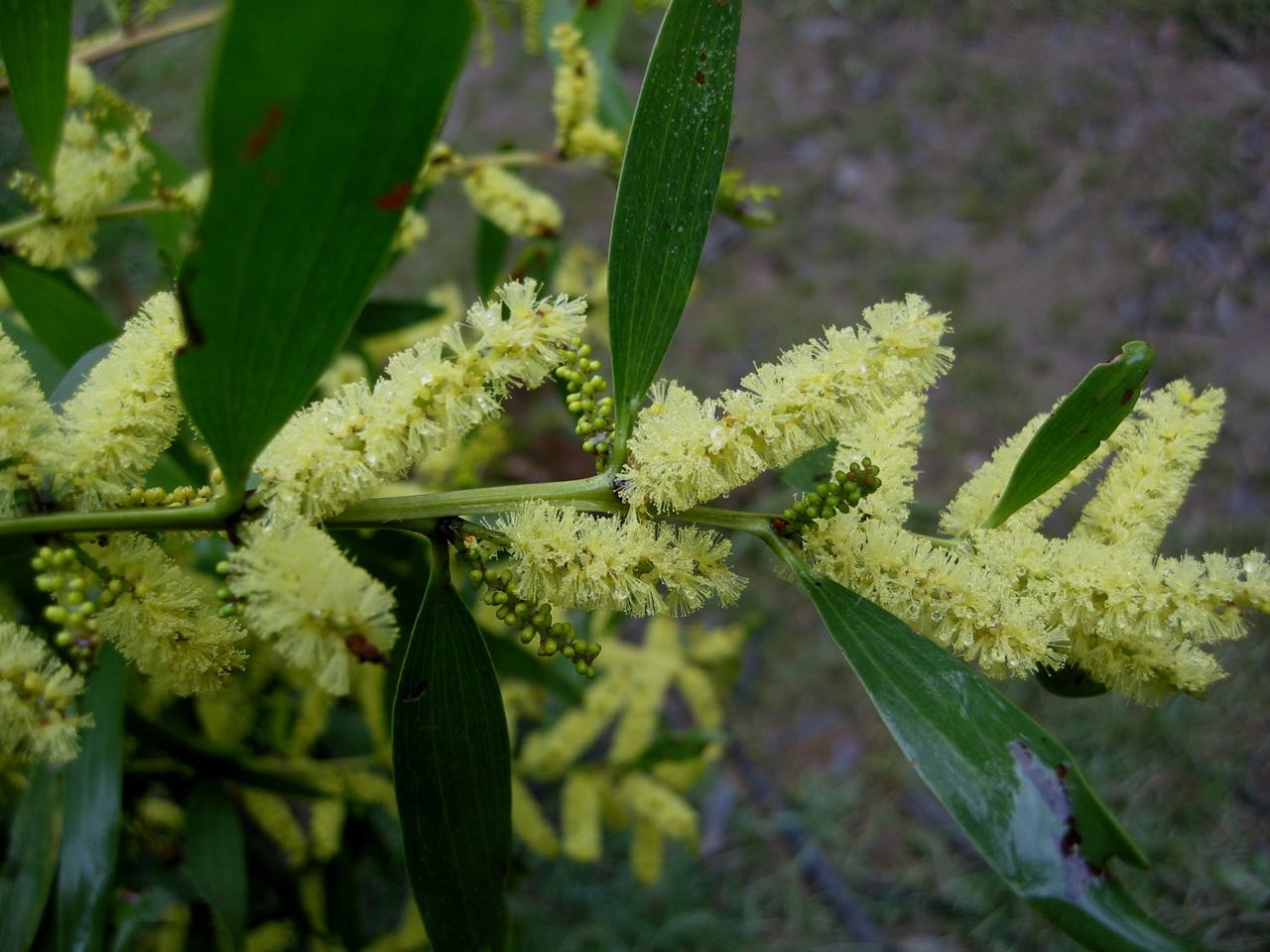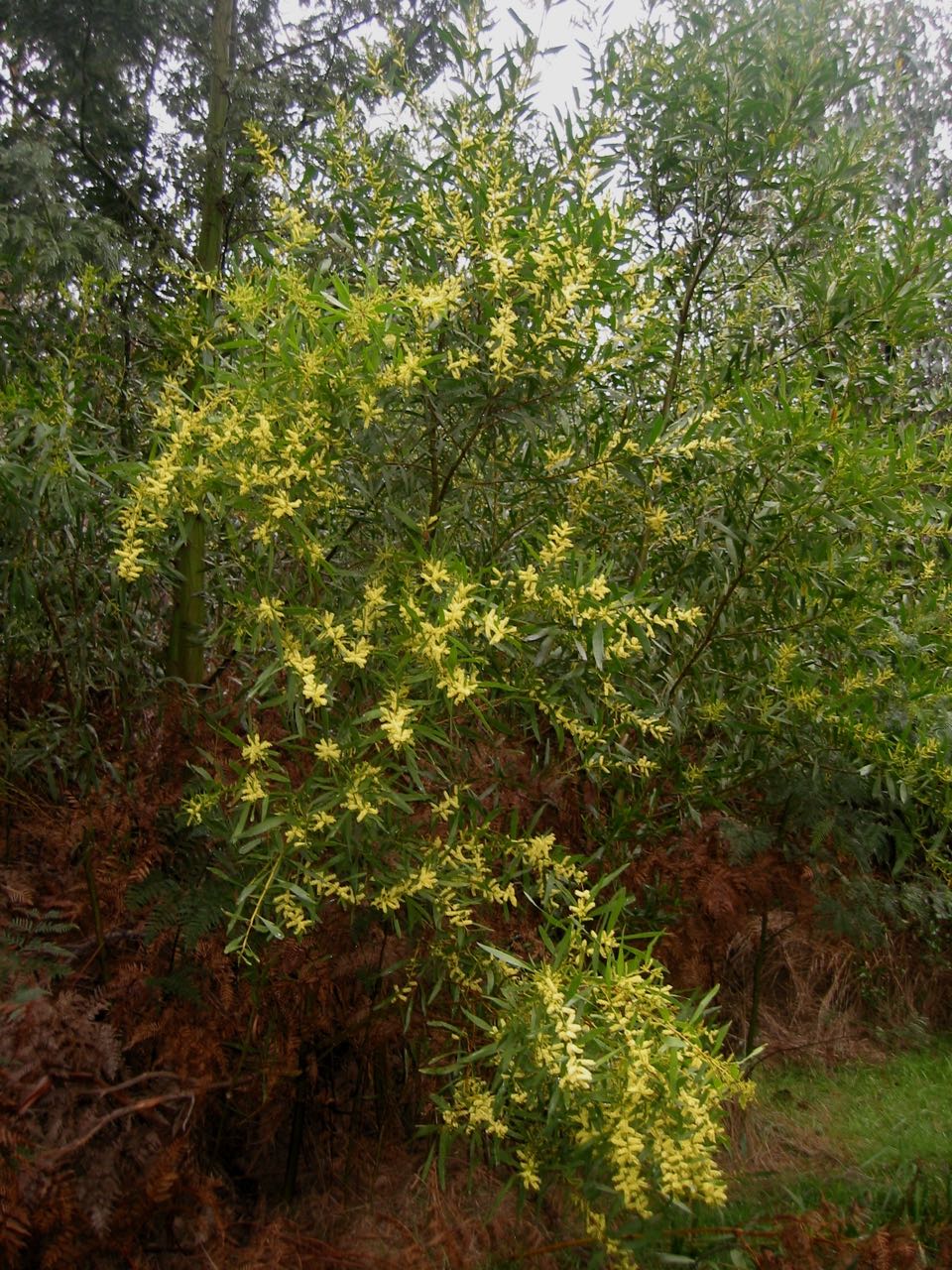

Sallow Wattle is a tall spreading bush or tree to 8m in height. The leaves are flat and between 5–12cm long,tapering at both ends, and with parallel veins evident. The flowers are in dense, bright yellow,
cylindrical spike 6cm long, in late winter–early spring. The fruit is contained within cylindrical pods, 10cm in length, sometimes constricted between the seeds.
Sallow Wattle is native to East Gippsland and New South Wales but can be highly invasive in teh Surf Coast.
Some information from ANGAIR on how do you tell the difference between Sallow Wattle and Coast Wattle? For ANGAIR’s merry band of committed weeders, this is an important question, because Coast Wattle is indigenous to the sand dunes on the Surf Coast, and hence is protected, whereas Sallow Wattle is an invasive weed, although it is indigenous to East Gippsland and New South Wales. Both plants are erect shrubs or small trees, and are very similar, and can hybridize together, making it identification even more difficult, so we need to focus on their differences to tell them apart.
The shape of the leaf or phyllode is very important in identification. The phyllodes of Sallow Wattle are linear, 5–20 cm long and 0.5–1.5cm wide s well as being quite thin and pliable. The phyllodes of Coast Wattle are much thicker, even leathery, shorter and wider 5–12 cm long, 1–3 cm wide, and narrowly elliptic in shape; the Also, the seed pods of Sallow Wattle ; those of Coast Wattle are commonly coiled or contorted. To check the differences between the varieties, investigate some of the wattles on the sand dunes, which are likely to be Coast Wattle, and compare them with Sallow Wattle, probably growing close to your residence.
Photos by Neil Tucker